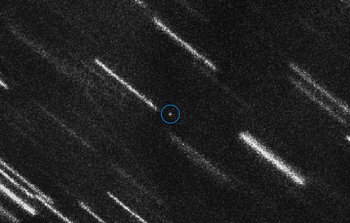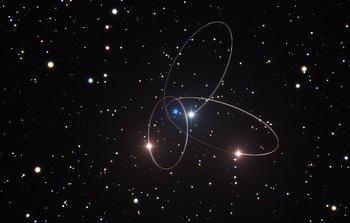Observations of “Jellyfish galaxies” with ESO’s Very Large Telescope have revealed a previously unknown way to fuel supermassive black holes. It seems the mechanism that produces the tentacles of gas and newborn stars that give these galaxies their nickname also makes it possible for the gas to reach the central regions of the galaxies, feeding the black hole that lurks in each of them and causing it to shine brilliantly. The results appeared today in the journal Nature.
The release, images and videos are available on:
http://www.eso.org/public/news/eso1725/
Kind regards,
The ESO Education and Public Outreach Department
16 August 2017

|
10 August 2017: Back in October 2012, the near-Earth asteroid 2012 TC4 had a close encounter with Earth. It passed our planet at a distance only a quarter of that between the Earth ...
|
| Read more |

|
9 August 2017: A new analysis of data from ESO’s Very Large Telescope and other telescopes suggests that the orbits of stars around the supermassive black hole at the centre of the ...
|
| Read more |

|
7 August 2017: This video takes a relaxed look at a tense process — cleaning and recoating the surface of one of the ESO Very Large Telescope’s 8.2-metre main mirrors.
Every night ...
|
| Read more |

|
4 August 2017: The Chilean Minister of Energy, Andrés Rebolledo, recently attended a ceremony marking the connection of ESO’s Paranal and Armazones sites, the latter being where the Extremely Large Telescope (ELT ...
|
| Read more |
|
|
|
|